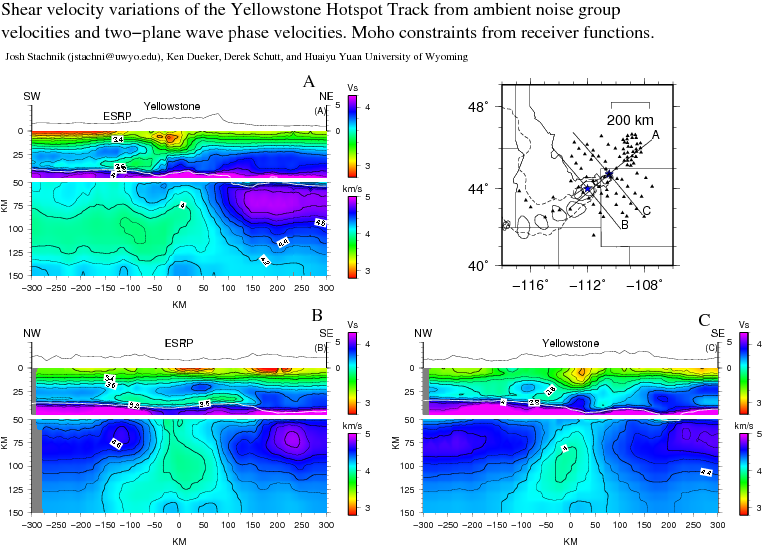Yellowstone
Currently, we're using surface waves from earthquakes (Schutt and
Dueker, 2007, in press) and ambient noise to image the crust and upper
mantle in
the Yellowstone region. Using the group and phase velocities from
Rayleigh waves, along with crustal thickness constraints (Yuan et al,
2007, in prep.), we inverted for a high resolution shear velocity model
for the Yellowstone Hotspot track. We use this model to interpret past
and present magmatic processes in the region.
- article (Stachnik2008)
- Stachnik, J.; Dueker, K.; Schutt, D. & Yuan, H.
- Imaging Yellowstone plume-lithosphere interactions from inversion of ballistic and diffusive Rayleigh wave dispersion and crustal thickness data
- Geochemistry, Geophysics, Geosystems,
- 2008, 9, Q06004
Earthscope 2007 poster,
J. Stachnik, K. Dueker, and D. Schutt (2007), Constraining Yellowstone Hotspot
magmatic processes beneath the eastern Snake River Plain
FFT Daystacks for Billings array stations,

